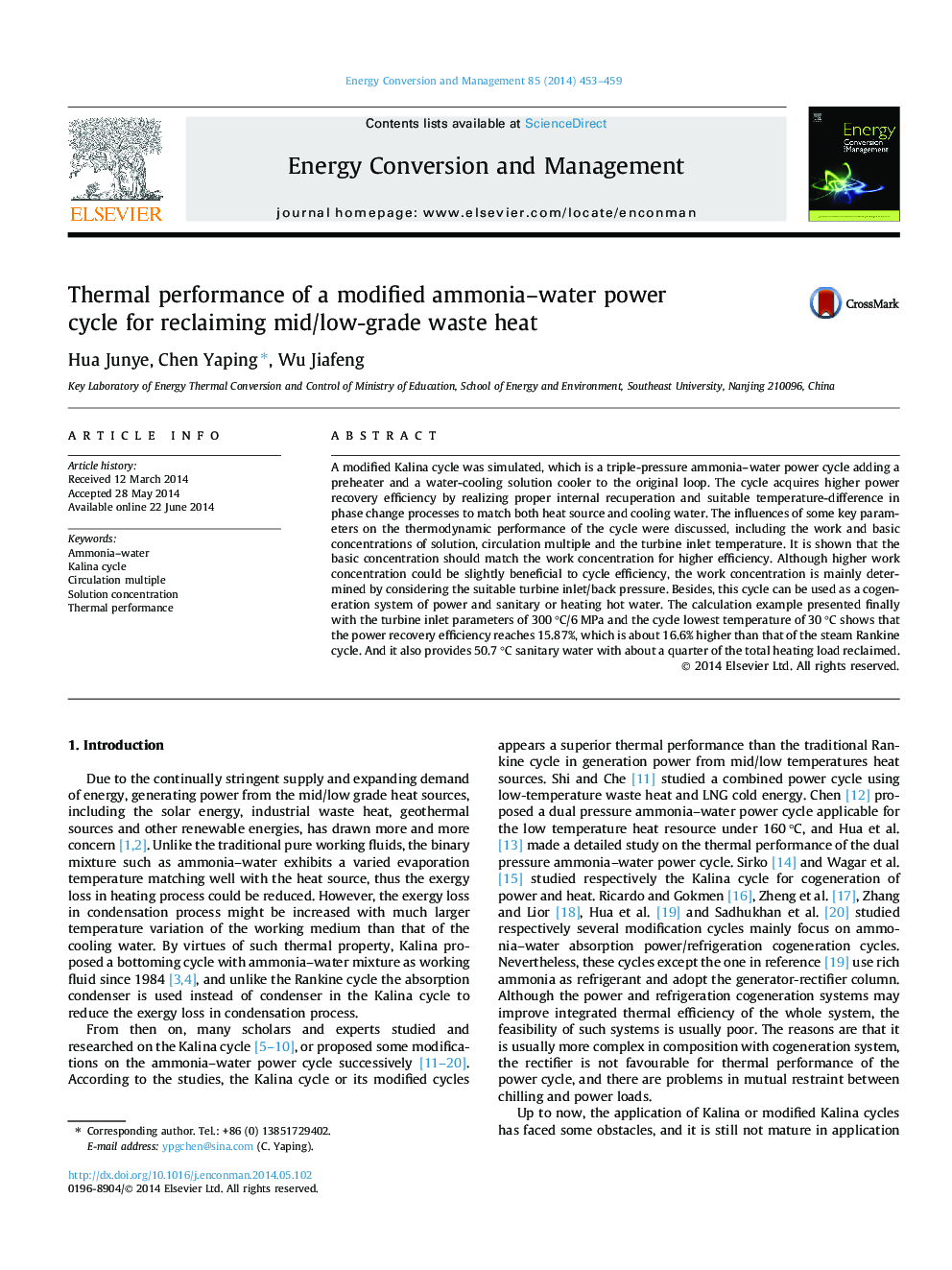| Article ID | Journal | Published Year | Pages | File Type |
|---|---|---|---|---|
| 7164674 | Energy Conversion and Management | 2014 | 7 Pages |
Abstract
A modified Kalina cycle was simulated, which is a triple-pressure ammonia-water power cycle adding a preheater and a water-cooling solution cooler to the original loop. The cycle acquires higher power recovery efficiency by realizing proper internal recuperation and suitable temperature-difference in phase change processes to match both heat source and cooling water. The influences of some key parameters on the thermodynamic performance of the cycle were discussed, including the work and basic concentrations of solution, circulation multiple and the turbine inlet temperature. It is shown that the basic concentration should match the work concentration for higher efficiency. Although higher work concentration could be slightly beneficial to cycle efficiency, the work concentration is mainly determined by considering the suitable turbine inlet/back pressure. Besides, this cycle can be used as a cogeneration system of power and sanitary or heating hot water. The calculation example presented finally with the turbine inlet parameters of 300 °C/6 MPa and the cycle lowest temperature of 30 °C shows that the power recovery efficiency reaches 15.87%, which is about 16.6% higher than that of the steam Rankine cycle. And it also provides 50.7 °C sanitary water with about a quarter of the total heating load reclaimed.
Related Topics
Physical Sciences and Engineering
Energy
Energy (General)
Authors
Hua Junye, Chen Yaping, Wu Jiafeng,
